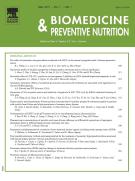Purification and characterization of carotenoids from green algae Chlorococcum humicola by HPLC-NMR and LC-MS-APCI - 09/11/12
Abstract |
The fresh water green algae Chlorococcum humicola (C. humicola), rich in bioactive components such as carotenoids, flavonoids, polyphnols and fatty acids, has a wide variety of health benefits used in the medical and food industry because of its possible role in the prevention of diseases like cancer. The present study focused on to elucidate the structural details of the existed carotenoids in the selected algae C. humicola. The total carotenoid extract quantitated and further fractionated in an open column chromatography (OCC) yields totally six major carotenoids. These fractions were confirmed by HPLC before subjecting to NMR and LC-MS-APCI analysis for their structural elucidation. The spectral data of these fractions revealed the six major fractions were violaxanthin, astaxanthin, lutein, zeaxanthin, ⍺-carotene and β-carotene. The findings of the present study confirm that green algae C. humicola is a rich source of carotenoids and should be further focused well for its beneficial effect.
El texto completo de este artículo está disponible en PDF.Keywords : Carotenoids, Green algae, Chlorococcum humicola, Carotenes, Xanthophils
Esquema
Vol 2 - N° 4
P. 276-282 - octobre 2012 Regresar al númeroBienvenido a EM-consulte, la referencia de los profesionales de la salud.
El acceso al texto completo de este artículo requiere una suscripción.
¿Ya suscrito a @@106933@@ revista ?


